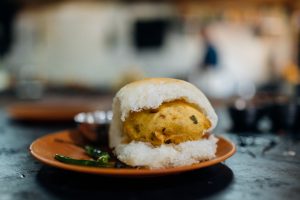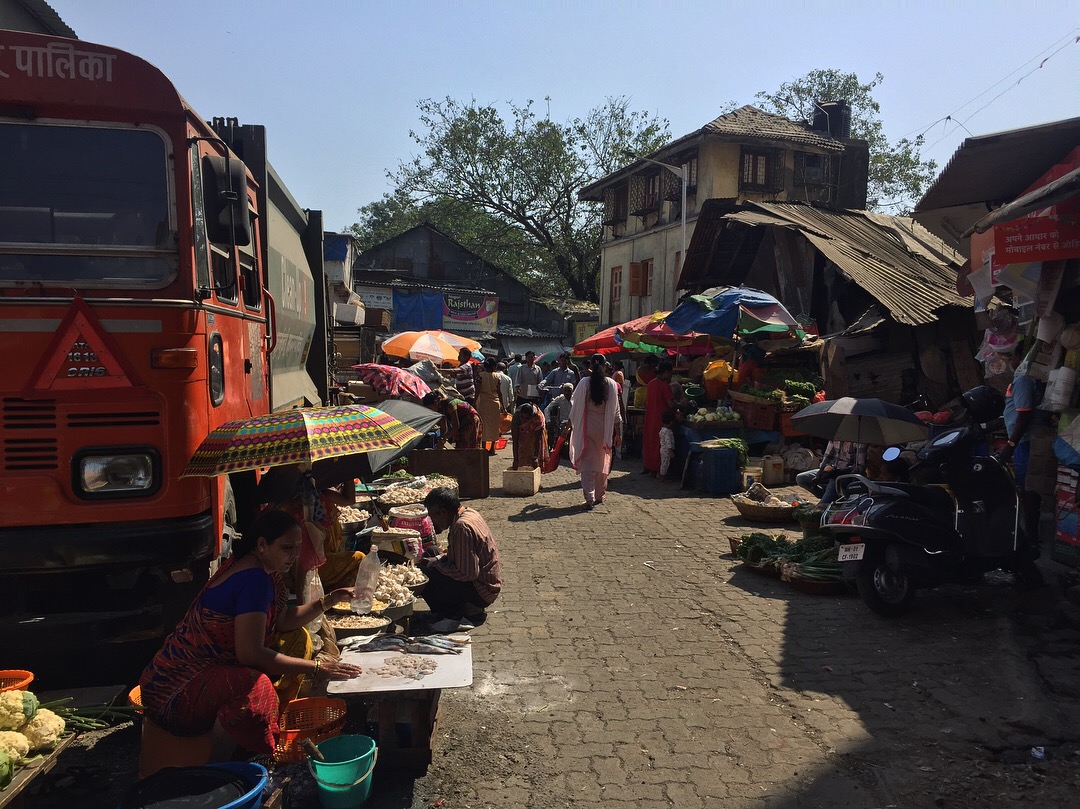Mumbai is a place that assaults the senses; an array of smells you’ve never smelt before, vibrant colours, and constant noises from the surge of tourists and the busy traffic. One of the aspects of Indian culture that entices people to the country is undeniably the food. Street food in particular has the advantages of being cheap, served quickly, with flavours unlike no other.
Much of Mumbai’s street food is vegetarian. Although reportedly only one in five Indians are vegetarian, Hinduism propagates a diet that disparages from hurting living beings, therefore some believers lessen meat intake. The snacks I have suggested therefore adhere to a vegetarian diet, as meat-free meals are more readily available in many places over the city.
One of the first things I had the pleasure in trying was masala dosa. This food is very popular in the Southern regions of India, and can be eaten at every meal of the day. Normally made fresh in front of you, the thin pancake-like dosa, made of a batter from crushed rice and lentils, is then stuffed with a mixture made of potato, lentils and rice, flavoured with curry leaves, turmeric and methi. Normally torn apart and eaten with your hands, dip in a spicy chutney for an extra hit of flavour.
The most popular street snack that everyone seemed to have in their hand at every tourist spot was a vada pav. This consists of a deep-fried potato patty served with an array of chutneys and green chilli pepper in a bread roll. The fast food snack has become so popular in the region that it has moved from street stalls and is now served in many cafes and restaurants.

Sev puri has no fixed recipe, and is often adapted from each stall that you go to. ‘Puri’ is a small, unleavened bread that is deep-fried until golden made from spices, potato and chickpeas. It can be served with several different foods, such as rice, chutneys and ‘sev’, consisting of crispy fried noodles made from chickpeas similar to Bombay mix. Often eaten at breakfast or as a light snack, it is best eaten with a fresh slice of mango and chaat masala.
Although you would assume to be similar to the sev puri, pani puri is a much lighter snack to the other suggestions. This time, the ‘puri’ acts as a hollow, round shell made from a similar chickpea batter, but instead forms a crisp that can be filled with potatoes, onions and tamarind chutney. It is then dipped in a spicy water, both sweet and savoury, and is eaten whole for a huge burst of flavours and aromas.
One of Mumbai’s older dishes, pav bhaji, originates from the middle of the nineteenth century, served as a thick and rich vegetable curry with a fresh, soft bread roll. The dish was a popular meal for workers being given quick foods on their lunch break, but is now served all over the city and in many restaurants. Although variations of the meal differ from each eatery, the curry normally contains mashed, soft vegetables such as cauliflower, potato, carrot and beans in a buttery, spicy sauce seasoned with cumin seeds (known as jheera), mixed fresh chillies and ginger paste.
All of this deliciously flavoursome food can be completed with a glass of the city’s well-known drink: cutting chai. With tea participating in the fundamental routine of many of our daily diets, tourists must try Mumbai’s creamy alternative. A combination of milk and various spices, this hot beverage is available on almost every street corner. ‘Cutting chai’ translates into ‘cut in half’, meaning a much smaller quantity that we would conventionally drink, served in a small glass. Some say that the smaller amount helps people moderate their tea drinking over a longer period of time.
If you have the opportunity to visit India, the food must be one of the priorities to experiment with. Although the country offers a plethora of cultural activity with a rich history and beautiful weather, Indian cuisine is like no other with its flavours, colours, and aromas.

